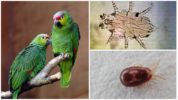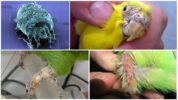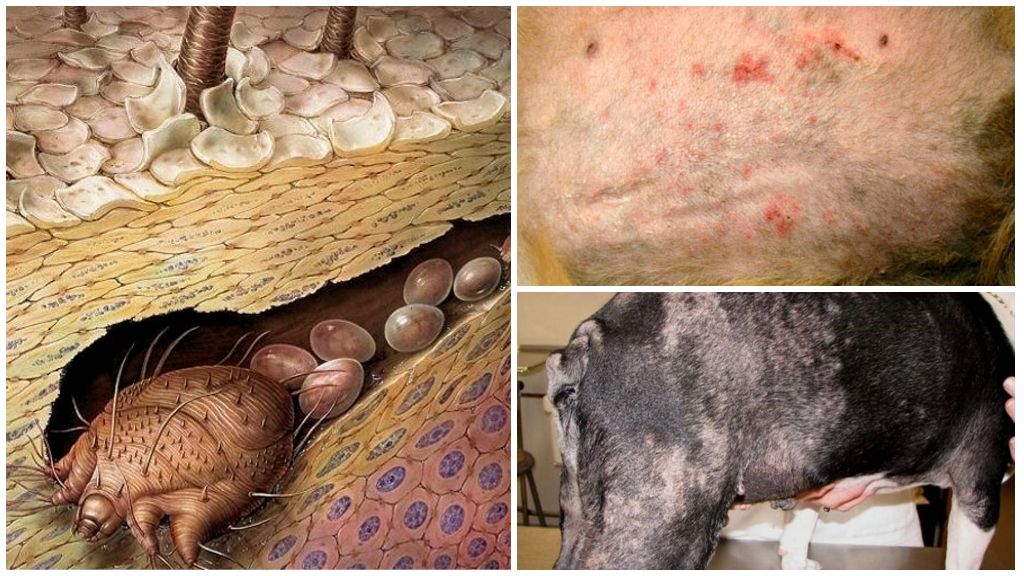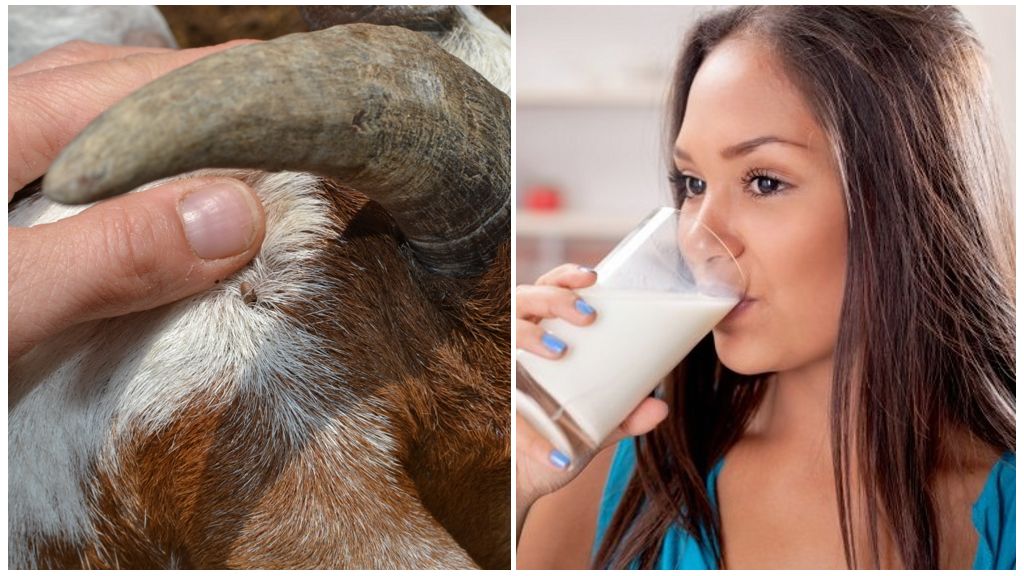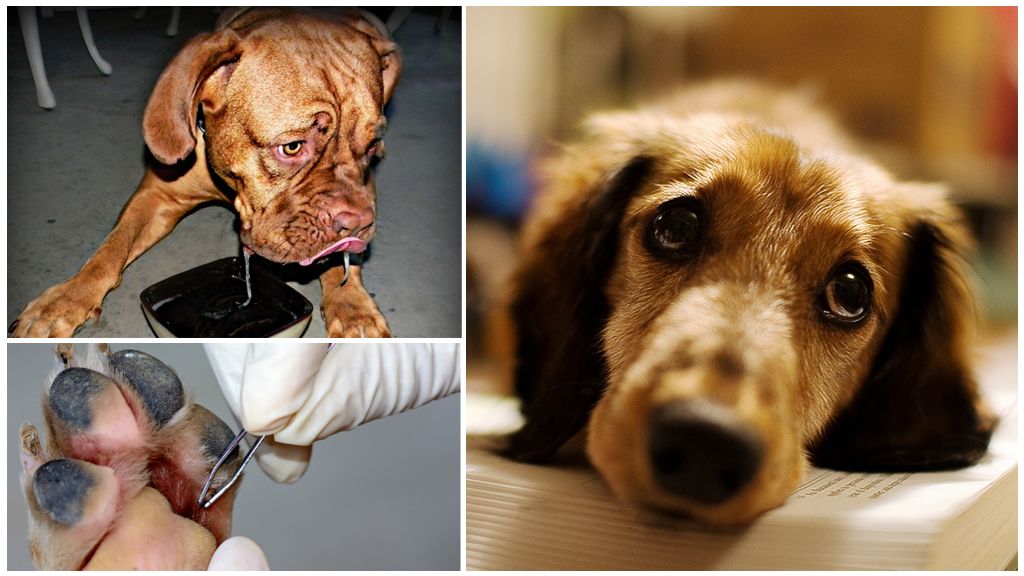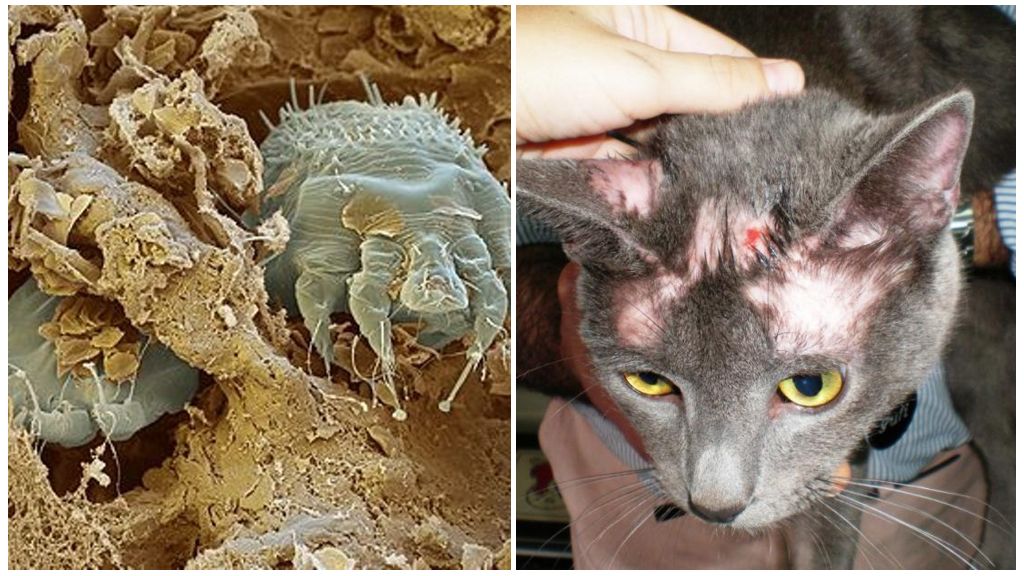- Parrot ticks
- Parrot mite scab
- Parrot treatment
The tick of the parrot in most cases remains invisible, the parasite hides under the plumage or climbs under the skin, and a length of 0.4 mm does not allow it to be seen with the naked eye. The veterinarian is usually consulted when signs of damage are clearly visible.
Types of Ticks
Ticks in the budgerigar are different, but not one of them can be seen at the initial stage of infection. It is worth paying attention to the pet, the symptoms of the tick are as follows:
- if the bird constantly itches, it is necessary to examine the feather cover more thoroughly, in most cases parasites manifest themselves in this way;
- pitted feathers and small bugs in the pallet will confirm the diagnosis;
- in more advanced situations, peeling of the skin occurs, the beak is bent.
On a note!
If the pet is constantly itching, and the molting period is long gone, it is better to play it safe and seek advice from a veterinarian. A thorough examination will help determine the causes of this behavior.
But the symptoms may vary depending on what kind of mite lesion occurred. Most often, several types of ticks affect parrots.
Tracheal tick
It is impossible to miss the appearance of this parasite, in a couple of days the parrot will actively signal about this:
- throw back your head regularly;
- breathe frequently;
- sneeze;
- cough hard.
In some individuals, the defeat is accompanied by regurgitation of food, and then complete refusal of food.
Symptoms should immediately alert the owners, an early visit to a specialist will help keep the pet healthy, and sometimes save a life.
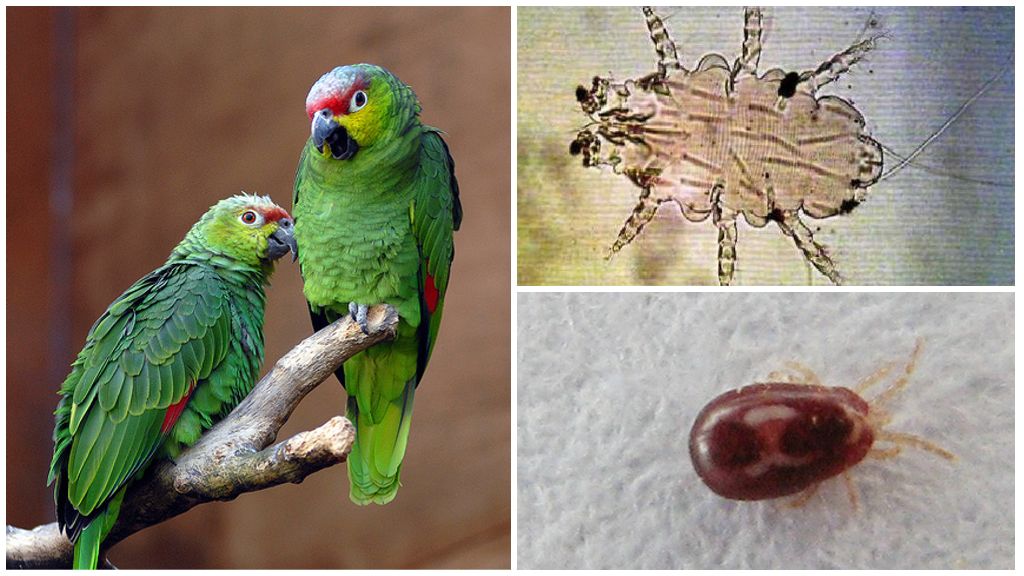
Feather tick
This type of parasite infects birds in the cage extremely rarely. The main sign is a rash of feather cover. The structure of the feather shaft suffers, and the parasite can be examined with the naked eye. The feather tick is characterized by black blotches in the pen shaft affected by the parasite.
Important!
The extreme stage of the lesion is complete pet baldness.
Feather flares are sometimes confused with seasonal molting. You can distinguish by the way the feathers fall. In case of a tick hit by a parrot, tail feathers immediately fall out. Further, the parasites spread throughout the cover.
Scabies mite
This type of parasite is the worst for a pet, getting under the skin, they gnaw through entire tunnels. The subcutaneous tick lives in the upper layers of the epidermis; tissue fluid is a nutrient medium for it. They eat it, and multiply in it. The dryness of the skin, which gradually turns into peeling, should alert.
The initial stage is not so scary, then scabies mites will actively throw out toxins, thereby poisoning the bird's body. A tick on the beak will appear at the very end of the infection. A photo of ticks in a parrot is presented below.
Treatment of a parrot from a tick takes place at home, only to establish a diagnosis on your own is not recommended. Inspection and specialist advice will help you choose the most effective drugs to rid your pet of unwanted "tenants".
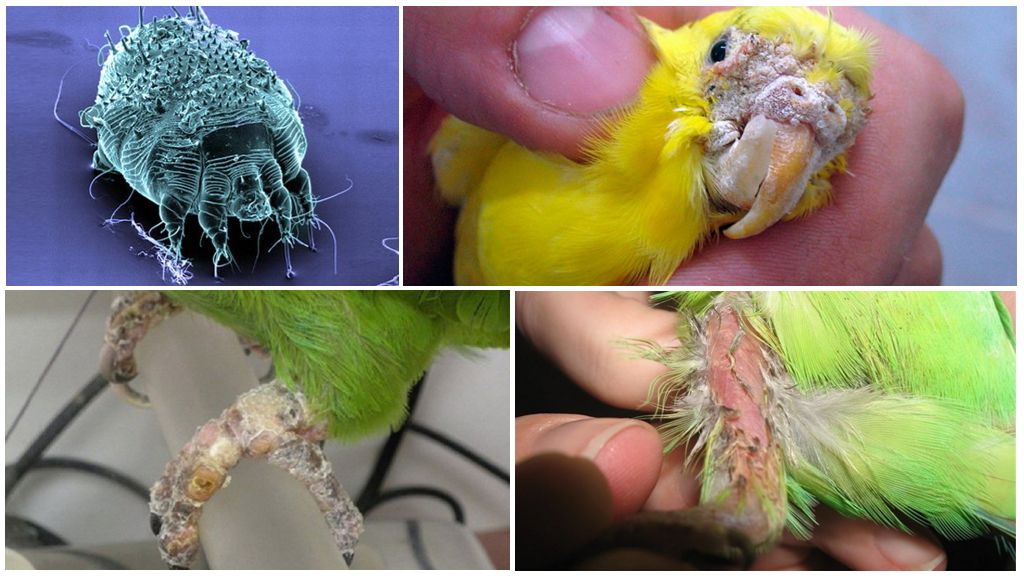
Treatment methods
It is necessary to treat an external tick in a parrot only after consultation with a veterinarian; an independent examination will not always be able to give answers to all questions. Depending on the type of tick, it is removed with different drugs. The most effective recognized:
- Aversectin ointment.
- Vaseline oil.
- Fipronil spray.
- Otodectin.
Important!
Most often, experts prescribe an ointment for ticks for parrots, it is easier to use, and the effect is excellent.
The purchase of the prescribed product is carried out only at the veterinary pharmacy, while attention is drawn to the availability and date of issue. It is necessary to control these points, because most parrots are prone to allergic reactions and not always the reason for this will be the substances that make up the composition. An expired drug will not only not help in the treatment, but can also destroy the pet.
Pets are treated as follows:
- It is advisable to carry out the treatment in the evening, when the bird is already sleepy and can not provide strong resistance.
- Cotton buds are used to apply the drug, a new one is used for each organ.
- A small amount of ointment is applied to the soft part of the cotton swab and the affected areas are treated with light movements.
- It is extremely careful to carry out the work so that the drug does not get into the eyes, respiratory openings on the beak, plumage.
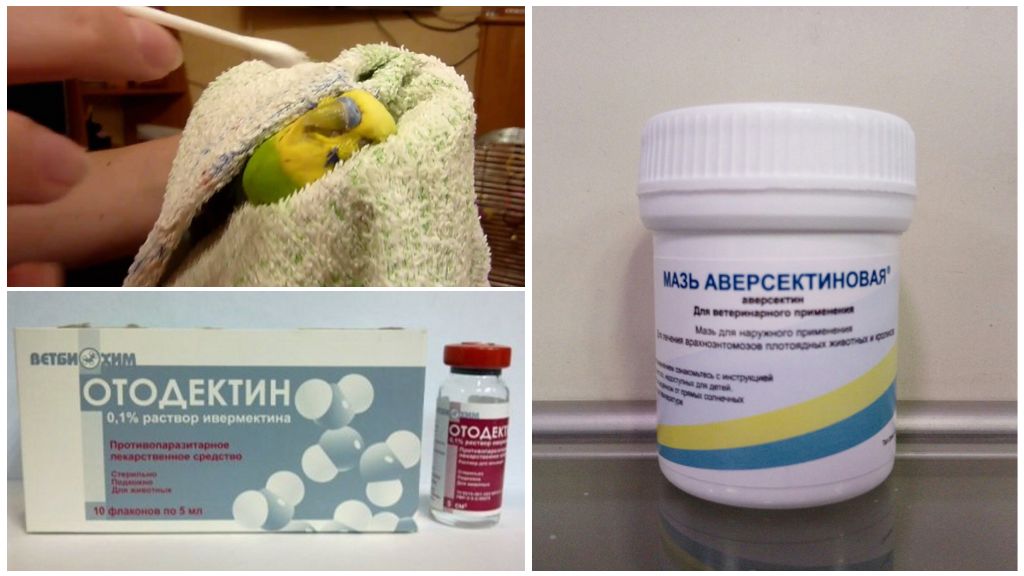
The treatment regimen is simple, the treatment is carried out once every five days. After the third such treatment, the pet becomes much easier.
On a note!
If the pharmacy did not have an ointment prescribed by a specialist, you can use liquid paraffin. The product is applied similarly, only every three days. The oil forms an airtight film that does not give oxygen access to ticks, they simply suffocate and die.
Preventive measures
In order for the recovery to be successful and much shorter in terms of time, you need to know and apply some rules. They are quite simple:
- during treatment, the bird is not allowed to fly outside the cage;
- if a couple of parrots live in the house, then the second individual must also be carefully examined;
- if the second parrot is not sick, it must be resettled;
- before starting treatment, cell disinfection is mandatory;
- all wooden elements such as ladders and rockers are thrown away, since they can become the carriers of tick larvae.
Additionally, vitamin supplements are introduced into the diet and a pet feeding regimen is established.
A parasite mite can appear for various reasons, the main thing is to detect the threat in time and be able to remove it.
